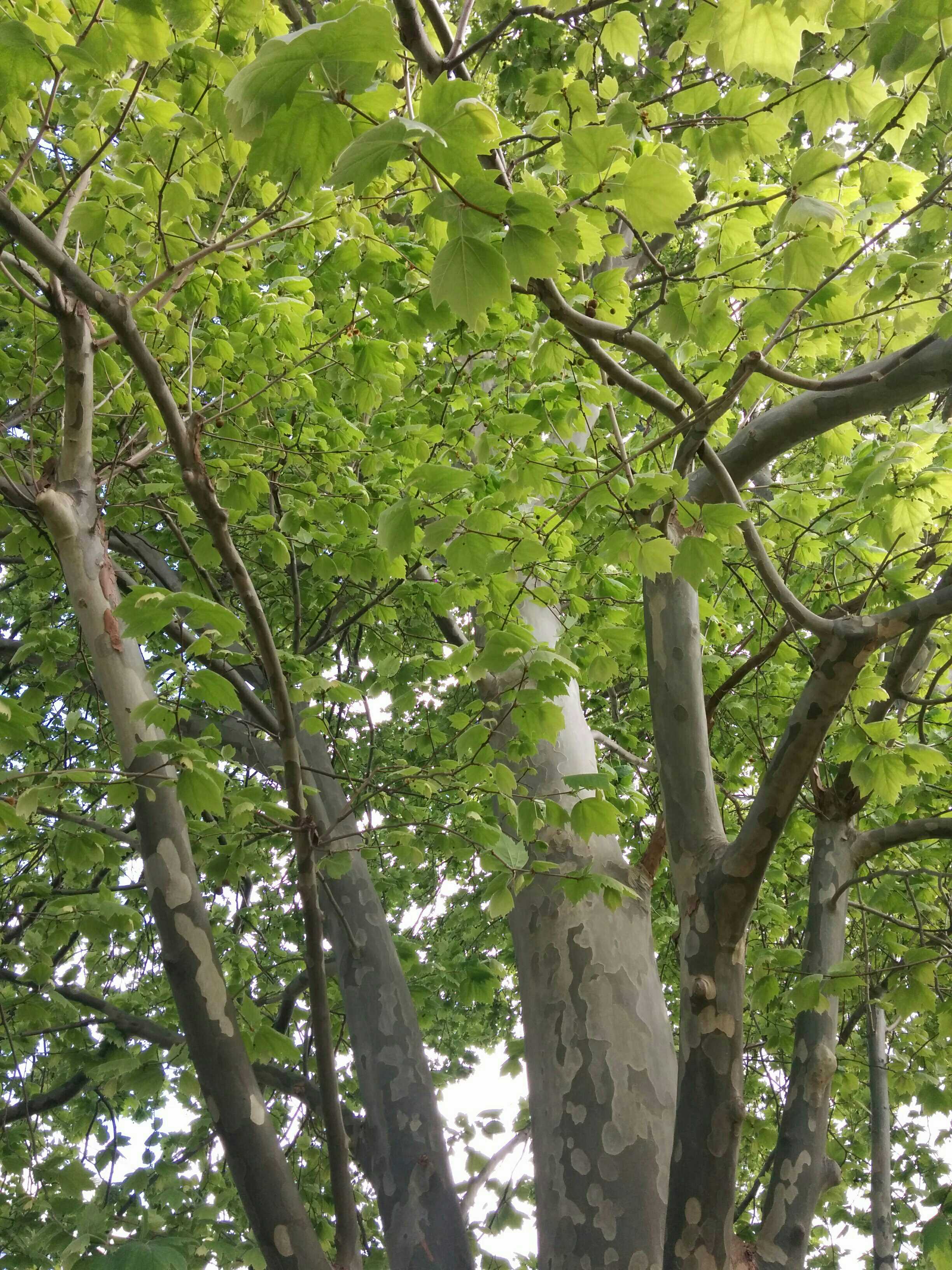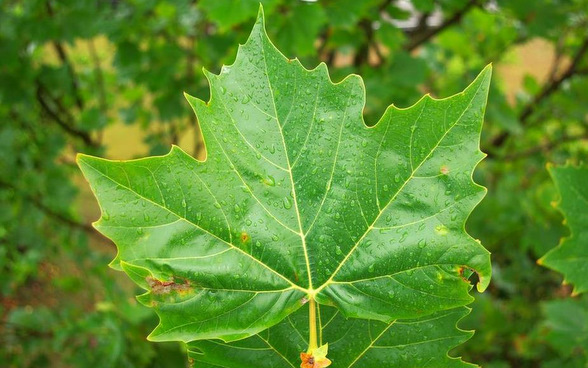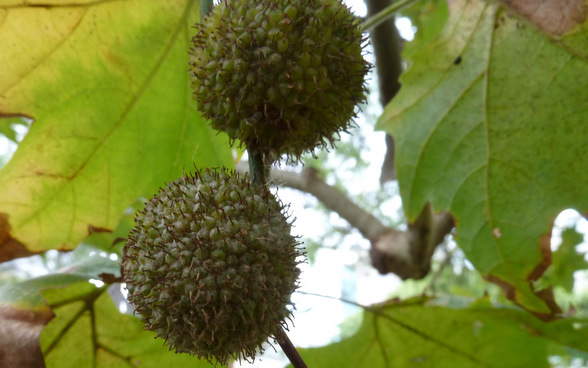Deciduous tree, growing to 15 – 30 m high and 15 – 20 m wide. Some of its grey-brown bark peels off to reveal a creamy white inner bark, giving the trunk a mottled appearance.
Leaves
Mid-to-dark green with 3 – 5 lobes and slightly serrated edges. They are 10 – 25 cm across and turn yellow-brown in autumn. The leaf lobes are about as wide as they are long.
Flowers
Red or yellow, in small rounded clusters. The red (female) flowers grow from the newer shoots and the yellow (male) flowers grow from older branches further back toward the trunk.
Fruits/Seeds
A ‘fuzzy’ rounded ball that grows on the end of a long stalk. It is 2.5 cm in diameter and contains many tiny seed-like fruits known as ashenes. The fruiting balls appear in pairs and turn from green to brown when ripe.
Field Guide
Improve your identification skills. Download your London Plane Tree field guide here!





